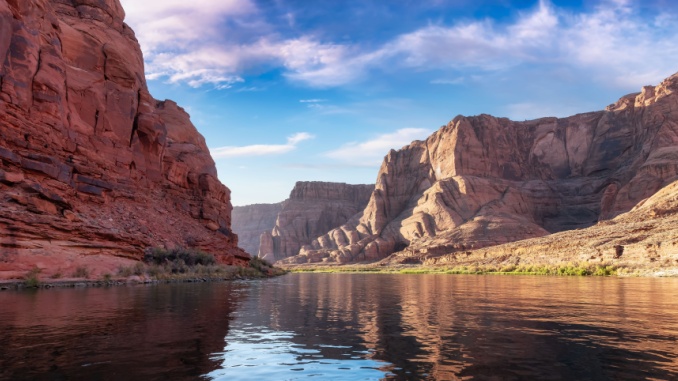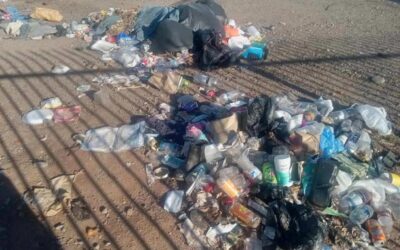By Matthew Holloway |
Arizona’s top elected leaders — Democrats and Republicans alike — have joined forces to demand federal action after the seven Colorado River Basin states missed a critical deadline to finalize post-2026 water-sharing rules. In a letter to Interior Secretary Doug Burgum, they warned that refusal by upper basin states to commit to verifiable conservation has pushed the negotiations to a breaking point.
The letter, dated November 11, 2025, highlights Arizona’s role as a leader in water conservation and criticizes upper basin states for refusing to commit to verifiable reductions, which the signatories say have stalled a seven-state agreement needed to sustain the river amid ongoing droughts.
The seven Colorado River Basin states—four in the upper basin (Colorado, Utah, Wyoming, New Mexico) and three in the lower basin (Arizona, California, Nevada)—missed a federal deadline on November 11th to submit a consensus plan for sharing water shortages after 2026, when current operating guidelines expire. Federal officials, including the Bureau of Reclamation, have urged the states to reach an accord to avoid potential court intervention or unilateral action by the Trump administration.
In the letter, the Arizona leaders commended Burgum’s efforts over the past year to develop a framework preserving the century-old 1922 Colorado River Compact, which allocates water among the states. They emphasized the river’s critical role in fueling Arizona’s advanced technology ecosystem, world-class agriculture, military bases, and communities home to millions, including 22 of the basin’s 30 Native American tribes.
“Arizona’s cutting-edge semiconductor industries and IT infrastructure are making it possible for the onshoring of manufacturing operations that are critical for maintaining American technological leadership,” the letter states. It notes that Yuma County, one of the world’s most sophisticated agricultural regions, produces over 90% of the winter leafy greens supplied to the United States and Canada each year.
The signatories stressed that Arizona’s allocation is vital not only to the state’s citizens but to national economic growth and independence. They warned that the upper basin states’ refusal to offer “meaningful, verifiable conservation commitments” over the last two years risks these foundations of growth.
Arizona has positioned itself as a basin-wide leader in water efficiency, the letter asserts, partnering with California and Nevada to propose creative and significant post-2026 operating criteria. Under most scenarios, Arizona’s plans would conserve 1.5 million acre-feet of water per year, representing more than 27% of the state’s entitlement in most years. This follows more than 3 million acre-feet in efficiencies already offered by the lower basin states since 2023 to stabilize Lakes Mead and Powell.
In contrast, the letter points out that upper basin states have repeatedly refused to implement any volume of binding, verifiable upper basin reductions. “This extreme negotiating posture—four of the seven Basin States refusing to participate in any sharing of water shortages—has led to a fundamental impasse that is preventing successful development of a 7-State consensus plan for management of the Colorado River,” it reads.
The group urged Burgum to use his authority to ensure that any alternative considered by the Department of the Interior “contains measurable and enforceable conservation requirements” for the upper basin, guaranteeing the resource remains available for Arizona’s contributions to the economy and national security.
Signatories to the letter include Governor Katie Hobbs (D), Senate President Warren Petersen (R-LD14), House Speaker Steve Montenegro (R-LD29), Senate Democratic Leader Priya Sundareshan (D-LD18), and House Democratic Leader Oscar De Los Santos (D-LD11).
A joint statement from the seven states and federal officials acknowledged the missed deadline. Still, it affirmed a shared recognition of the basin’s challenges, with negotiators committing to continuing talks despite the setback. Lake Mead’s surface elevation stood at 1,057 feet as of recent measurements, with commenters noting that’s just 37 feet above levels that could trigger a “devastating” crisis for Arizona, including potential mandatory cuts to urban and agricultural users.
The full text of the letter is available here.
Matthew Holloway is a senior reporter for AZ Free News. Follow him on X for his latest stories, or email tips to Matthew@azfreenews.com.








